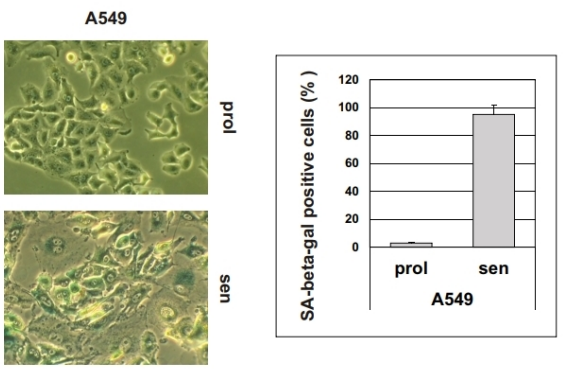PRIN2022 - Proteomic and miRnomic investigations of senescence-derived exosomes to identify circuits modulating cancer chemoresistance and tumor microenvironment

Titolo progetto: PRIN2022 - Proteomic and miRnomic investigations of senescence-derived exosomes to identify circuits modulating cancer chemoresistance and tumor microenvironment
Programma di finanziamento: PRIN 2022
Responsabile scientifico: prof.ssa Giulia Antoniali
Ruolo del DAME: coordinatore
Descrizione generale:
An emerging trend of thought proposes that EVs play a role in facilitating tumor progression and chemoresistance via signaling between tumor cells and conferring paracrine senescence on neighbouring cells. In this context, EVs derived from cancer cells which have undergone therapy-induced senescence (TIS) may represent a route through which TIS cancer cells dispose of proteins and contributing to cancer cell survival and resistance to chemotherapy. Whilst the enhanced secretome of senescent cells has been extensively investigated, changes in EV secretion by TIS-senescence cells has only recently received significant research interest. By using a lung cancer cellular model of chemotherapy induced-senescence, we will high-throughput investigate the proteomic and miRnomic content of early and late senescence-associated exosomes together with SASP in the modulation of cancer chemoresitance and tumor microenvironment inflammation of receiving cells. Through the combination of different unbiased screening and molecular approaches here we aim to: 1. Identify exosomal proteins directly involved in the modulation of DNA damage response (DDR) signalling activation and responsible for microenvironment inflammation associated with chemoresistance. 2. Identify exosome-contained miRNAs and their target genes associated with cancer chemoresistance and DDR/SASP activation. 3. Uncover the role played by cytokines and chemokines secreted in media of chemotherapy-induced senescence to sustain cancer chemoresistance and modulating tumor microenvironment The results obtained will contribute to improve the understanding of the bystander effect of neighboring cancer cells. Specifically, by understanding how EVs and SASP are or may be involved in lung chemoresistance, novel targeted therapies may be an effective alternative to current treatment options in the near future.

Partner del progetto:
- Università degli Studi di Udine
- Consiglio Nazionale delle Ricerche (CNR) Napoli
- Università degli Studi di Napoli Federico II
Date inizio e fine progetto: 05.10.2023 – 04.10.2025
Budget totale del progetto: 67.319,00€
Sito web: https://prin.mur.gov.it/
Finanziato dall’Unione europea – Next Generation EU